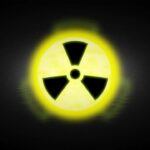Quartz is one of the most abundant and widely distributed minerals on Earth. With its remarkable physical and chemical properties, quartz plays a pivotal role in a wide variety of industries, ranging from construction and electronics to jewelry and optics. Its versatility, combined with its natural beauty and durability, makes it an essential material in both industrial and decorative applications. This article will provide an in-depth exploration of quartz, covering its composition, varieties, physical properties, occurrence in nature, and diverse industrial uses.
Composition and Structure of Quartz
Quartz is a crystalline mineral composed of silicon dioxide (SiO₂). The structure of quartz consists of a three-dimensional network of silicon-oxygen tetrahedra, with each silicon atom covalently bonded to four oxygen atoms. This tetrahedral arrangement forms the basis of quartz’s overall crystal structure. Silicon dioxide is one of the most stable and abundant compounds found in the Earth’s crust, and it is the primary component of quartz.
Quartz is part of the silicate mineral group, which also includes other minerals like feldspar, mica, and talc. Silicon dioxide forms the backbone of many other silicate minerals, but quartz is distinguished by its highly ordered crystalline structure, making it one of the hardest and most durable minerals found in nature.
Varieties of Quartz
Quartz exists in numerous forms and varieties, each with distinct colors and properties. These varieties have different uses based on their physical characteristics, and they also have cultural and metaphysical significance. Some of the most common varieties of quartz include:
1. Clear Quartz (Rock Crystal)
Clear quartz, also known as rock crystal, is the most common and pure form of quartz. It is transparent and colorless, and its high clarity makes it ideal for use in optical applications. Clear quartz is used in a variety of ways, from jewelry to scientific equipment, thanks to its ability to transmit light and its optical properties.
2. Amethyst
Amethyst is a purple variety of quartz, prized for its rich, violet color. This color is attributed to the presence of trace amounts of iron and other elements in the crystal structure. Amethyst is one of the most popular gemstones in the world and is often used in jewelry. In addition to its aesthetic appeal, amethyst is believed to have healing properties, often associated with calming and emotional balance.
3. Citrine
Citrine is a yellow to golden-brown variety of quartz. Its color comes from trace amounts of iron, which give the crystal a bright, warm hue. Citrine is often used as a gemstone, and it is also thought to possess metaphysical properties, such as bringing prosperity and positive energy.
4. Rose Quartz
Rose quartz is a translucent, pale pink variety of quartz that is often used in decorative items and jewelry. This variety of quartz is associated with love and emotional healing in many cultures. Rose quartz is frequently used in metaphysical practices, where it is believed to promote peace, harmony, and self-love.
5. Smoky Quartz
Smoky quartz ranges in color from light brown to almost black, and its coloration is due to natural radiation exposure during its formation. Smoky quartz is used as a gemstone and is believed to have protective and grounding properties. It is often used in jewelry and as an ornamental stone.
6. Rutilated Quartz
Rutilated quartz contains needle-like inclusions of rutile, a titanium dioxide mineral. These inclusions give the quartz its unique appearance, with golden, red, or brown rutile strands running through the clear quartz. Rutilated quartz is used in jewelry and is believed to amplify energy and promote spiritual growth.
Physical Properties of Quartz
Quartz possesses several distinctive physical properties that make it valuable for a wide range of applications. These properties include hardness, chemical resistance, transparency, and thermal resistance.
1. Hardness
Quartz is one of the hardest minerals, with a hardness rating of 7 on the Mohs scale. This means that quartz can withstand abrasion and wear, making it ideal for use in applications where durability is essential. Its hardness allows it to be used as an abrasive material in industrial applications such as grinding, cutting, and polishing.
2. Transparency
Many varieties of quartz, such as clear quartz, are transparent, which makes them valuable for optical applications. Transparent quartz is used in the production of lenses, prisms, and other optical components. It is also commonly used in watches and clocks, where its ability to transmit light is crucial for accurate timekeeping.
3. Chemical Resistance
Quartz is highly resistant to chemical weathering and corrosion. Unlike many other minerals, quartz does not easily react with acids or other chemicals, which makes it durable in harsh environments. This chemical stability is one of the reasons why quartz is widely used in the manufacturing of glass, concrete, and other construction materials.
4. Thermal Resistance
Quartz has excellent resistance to heat and can withstand high temperatures without decomposing or melting. This property makes it suitable for use in applications such as furnaces, kilns, and other high-temperature environments. Quartz’s ability to retain its integrity under extreme conditions is one of the reasons why it is used in industrial processes that involve heat.
5. Piezoelectric Properties
Quartz has piezoelectric properties, meaning it generates an electrical charge when subjected to mechanical stress. This property is crucial in the electronics industry, where quartz crystals are used in oscillators and resonators for timekeeping devices, such as watches, and in communication equipment.
Occurrence of Quartz in Nature
Quartz is one of the most abundant minerals in the Earth’s crust, making up approximately 12% of the Earth’s total volume. It is commonly found in a variety of rock types, including igneous, sedimentary, and metamorphic rocks.
1. Igneous Rocks
Quartz is a primary component of many igneous rocks, especially granites and rhyolites. It forms from the crystallization of magma and is often present in large crystals in granite and other felsic rocks. Quartz can also be found in the form of smaller grains in rocks like basalt.
2. Sedimentary Rocks
Quartz is a major component of sedimentary rocks, particularly sandstone. Over time, quartz crystals weather and break down into smaller particles, which are then transported by water and wind and deposited as sand. The cementation of these sand particles forms sandstone, a rock composed primarily of quartz grains.
3. Metamorphic Rocks
Quartz is also a prominent mineral in many metamorphic rocks. For example, when sandstone undergoes metamorphism, it transforms into quartzite, a highly durable rock composed almost entirely of quartz. Quartzite is used as a building material due to its strength and resistance to weathering.
Industrial Uses of Quartz
Quartz has numerous industrial applications due to its hardness, chemical resistance, and thermal stability. Some of the most significant uses of quartz include:
1. Construction and Building Materials
Quartz is a key ingredient in the production of concrete, cement, and glass. Crushed quartz is used as an aggregate in concrete, while quartz sand is a critical component in the production of glass. The durability and resistance to chemical weathering make quartz ideal for use in construction materials.
2. Electronics
Quartz’s piezoelectric properties make it invaluable in the electronics industry. Quartz crystals are used in oscillators, which are essential for controlling the timing in electronic devices like watches, clocks, and computers. Quartz oscillators are highly accurate and stable, making them the standard for timekeeping in modern electronics.
3. Jewelry and Gemstones
Many varieties of quartz, such as amethyst, citrine, and rose quartz, are highly valued as gemstones. Their hardness, beauty, and variety of colors make them ideal for use in jewelry. Quartz is used in rings, necklaces, bracelets, and other decorative items.
4. Optical Applications
Quartz is used in the production of optical components such as lenses, prisms, and windows. Its transparency and ability to withstand high temperatures make it an excellent material for optical equipment used in science, photography, and other industries.
5. Foundry and Abrasive Materials
Quartz is used in the foundry industry as a mold material for casting metals. Its hardness and resistance to heat make it an ideal material for creating molds that can withstand the molten metal. Additionally, quartz is used as an abrasive in sandpaper, grinding wheels, and cutting tools due to its hardness.
6. Silicon Production
Quartz is a key source of silicon, a material essential in the production of semiconductors, solar panels, and computer chips. Silicon extracted from quartz is widely used in the electronics industry, where it is the foundation of modern technology.
Metaphysical and Healing Properties
Throughout history, quartz has also been used for its purported metaphysical properties. In many cultures, quartz is believed to possess healing abilities, helping to balance energy and promote emotional well-being. Different types of quartz, such as rose quartz and amethyst, are often used in crystal healing practices to promote love, peace, and mental clarity.
Environmental Impact
While quartz is abundant in nature, the extraction and mining of quartz can have environmental impacts. Large-scale mining can lead to habitat destruction, soil erosion, and water pollution. It is important for industries to adopt sustainable mining practices to minimize the environmental footprint of quartz extraction.
Conclusion
Quartz is a versatile and valuable mineral with an array of uses in industries ranging from construction to electronics, jewelry, and optics. Its physical properties, such as hardness, transparency, chemical resistance, and thermal stability, make it an indispensable material in both industrial and decorative applications. Whether as a key ingredient in concrete and glass or as a gemstone in jewelry, quartz continues to be a vital mineral in our modern world. Its abundance, durability, and unique characteristics ensure that it will remain an essential part of various industries for generations to come.




